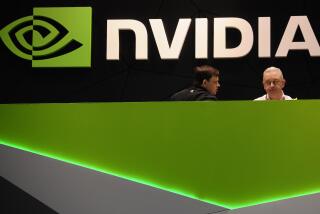Intel
- Share via
No. 1, Times 100; No. 1, Absolute Profits; No. 1, Market Value
If only the paranoid survive, as Intel Corp. Chief Executive Andrew Grove said in the title of his recent best-selling book, then Intel must be abundantly paranoid.
The company dominates this year’s Times 100 charts: It leads the state’s companies in profit, market value and cash flow and is near the top in sales, work-force size and other categories.
With agility and power that are the envy of companies inside and outside the computer industry, the Santa Clara-based company’s grip on the computer chip business seems to grow only stronger.
“Intel is the computer today, not Compaq and IBM,” said Jonathan Joseph, an analyst at Montgomery Securities in San Francisco. “Those guys are just metal benders. Intel does the building.”
The company’s processors are the engines that drive more than 80% of the world’s computers, a commanding position achieved through relentless innovation and aggressive pricing.
Intel’s 1996 sales were up 31% to $22.7 billion. Its $6.25-billion profit was more than twice that of the next-biggest earner, BankAmerica Corp. That combination helps explain why Intel’s stock market capitalization totals a stunning $112 billion.
The company has made occasional mistakes in its history. Three years ago, a flaw was detected in the company’s Pentium processor, but Intel initially refused to offer to replace the chips. It later relented.
In an interview with The Times late last year, Grove took much of the blame for the incident. “I was being self-righteous,” he said. “It was largely an attitude issue, and it was largely me.”
Recently, there have been signs that rival chip maker Advanced Micro Devices could pose a threat to Intel with a new microprocessor that is slightly slower but 35% cheaper than the Pentium II.
“The challenge for Intel is to remain driven and innovative,” analyst Joseph said. “So far, they’ve been pretty good at that.”






